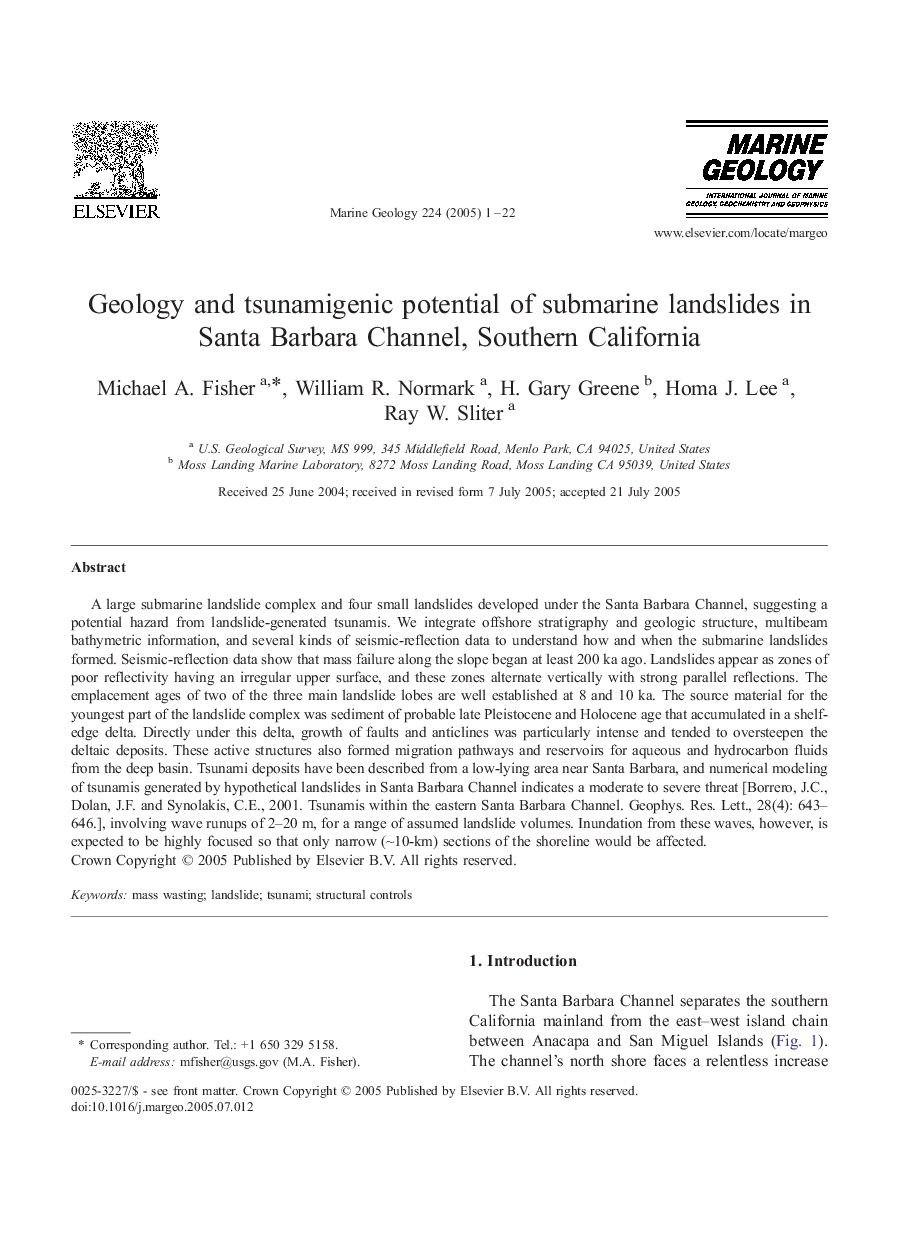| Article ID | Journal | Published Year | Pages | File Type |
|---|---|---|---|---|
| 9532707 | Marine Geology | 2005 | 22 Pages |
Abstract
A large submarine landslide complex and four small landslides developed under the Santa Barbara Channel, suggesting a potential hazard from landslide-generated tsunamis. We integrate offshore stratigraphy and geologic structure, multibeam bathymetric information, and several kinds of seismic-reflection data to understand how and when the submarine landslides formed. Seismic-reflection data show that mass failure along the slope began at least 200 ka ago. Landslides appear as zones of poor reflectivity having an irregular upper surface, and these zones alternate vertically with strong parallel reflections. The emplacement ages of two of the three main landslide lobes are well established at 8 and 10 ka. The source material for the youngest part of the landslide complex was sediment of probable late Pleistocene and Holocene age that accumulated in a shelf-edge delta. Directly under this delta, growth of faults and anticlines was particularly intense and tended to oversteepen the deltaic deposits. These active structures also formed migration pathways and reservoirs for aqueous and hydrocarbon fluids from the deep basin. Tsunami deposits have been described from a low-lying area near Santa Barbara, and numerical modeling of tsunamis generated by hypothetical landslides in Santa Barbara Channel indicates a moderate to severe threat [Borrero, J.C., Dolan, J.F. and Synolakis, C.E., 2001. Tsunamis within the eastern Santa Barbara Channel. Geophys. Res. Lett., 28(4): 643-646.], involving wave runups of 2-20 m, for a range of assumed landslide volumes. Inundation from these waves, however, is expected to be highly focused so that only narrow (â¼10-km) sections of the shoreline would be affected.
Related Topics
Physical Sciences and Engineering
Earth and Planetary Sciences
Geochemistry and Petrology
Authors
Michael A. Fisher, William R. Normark, H. Gary Greene, Homa J. Lee, Ray W. Sliter,
